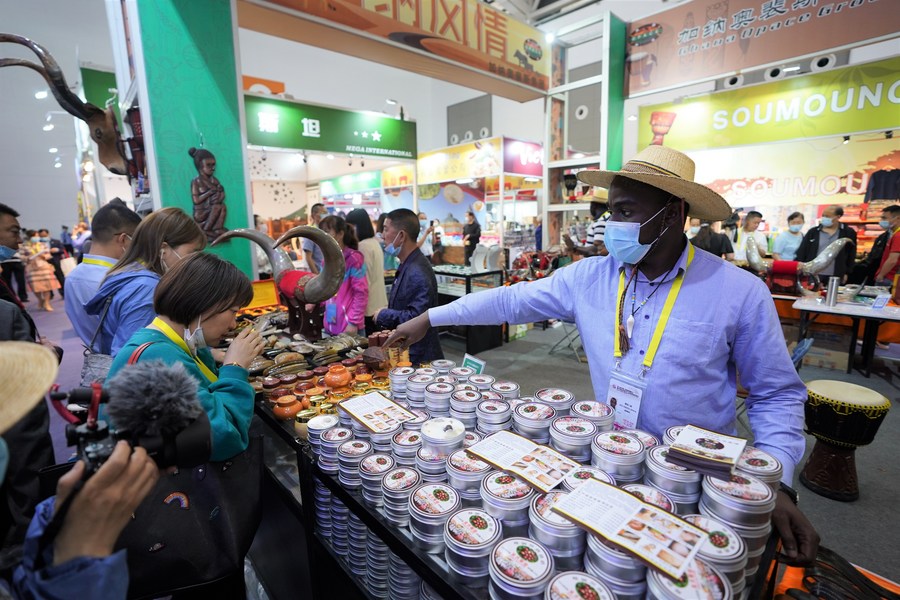




- BRNN
- BRI News
- BRNN News
- Database
Official Documents Polices and Regulations
Inter-government Documents International Cooperation BRI Countries
Business Guide Economic Data BRI Data
Trade
Investment Projects Latest projects
Cases - Content Pool
Silk Road e-commerce, a new international cooperation platform for economic cooperation under the Belt and Road Initiative (BRI), has seen robust development in recent years, boosting two-way trade between China and countries along the BRI route.

An exhibitor (1st R) introduces his products at the Fifth Silk Road International Exposition in Xi'an, capital of northwest China's Shaanxi Province, May 11, 2021. (Xinhua/Zhang Bowen)
Since signing its first bilateral memorandum of understanding (MoU) on e-commerce cooperation with Chile at the end of 2016, China has inked MoUs on e-commerce cooperation and established bilateral e-commerce cooperation mechanisms for cooperation in policy exchange, planning coordination, industry promotion, sub-national cooperation, capacity building and other fields with over 20 countries from five continents, according to an official with the country's Ministry of Commerce (MOFCOM).
China's cross-border e-commerce exports in the first quarter of 2022 climbed 92.7 percent year on year, according to an official with MOFCOM at the Silk Road E-Commerce International Cooperation (Zhengzhou) Summit Forum of the 6th Global Cross-Border E-Commerce Conference held in Zhengzhou, capital of central China's Henan in August.
At the same event, Uruguayan ambassador to China Fernando Lugris expressed Uruguay's readiness to cooperate with Chinese enterprises in cross-border e-commerce and help Chinese partners expand their business in Latin America and the Caribbean region. Ali Obaid Al Dhaheri, ambassador of the United Arab Emirates (UAE) to China, said that Silk Road e-commerce helps conventional foreign trade companies realize customized manufacturing. Hailing the huge potential of cross-border e-commerce, he said UAE was ready to enhance and develop bilateral relations through the cooperation mechanism.
Silk Road e-commerce has many positive effects on the BRI, as it can facilitate trade between China and countries along the route, help these countries with the development of many industries including logistics, payment and digital development, and empower the trade sector along the BRI route through digital and internet technologies, observed Zhang Li, director of the e-commerce research institute affiliated with MOFCOM.
The thriving Silk Road e-commerce can be largely attributed to China's efforts in a range of aspects. The country has established cross-border e-commerce comprehensive pilot zones in six batches and rolled out a series of supportive policies, expanding its list for cross-border e-commerce retail imports.
In addition, China has held multiple events, such as livestreaming sessions and launches of country pavilions on e-commerce platforms, to help its partners bring their quality products into the Chinese market and find new trade channels. During the 2022 China-ASEAN Silk Road Cross-border E-commerce Forum held in Nanning, south China's Guangxi Zhuang Autonomous Region, in September, online events were held to promote products from Guangxi, while diplomats from ASEAN countries in China were invited to introduce their countries’ products to Chinese consumers.
Moreover, China's MOFCOM has held online training sessions for officials and those working in cross-border e-commerce from cooperating countries, covering areas such as policies and regulations, development trends, innovation, and practice. So far, the country has held dozens of livestreaming training sessions, which have attracted over 6,000 viewers from over 20 countries and have been replayed over 100,000 times.

Tel:86-10-65368972, 86-10-65369967